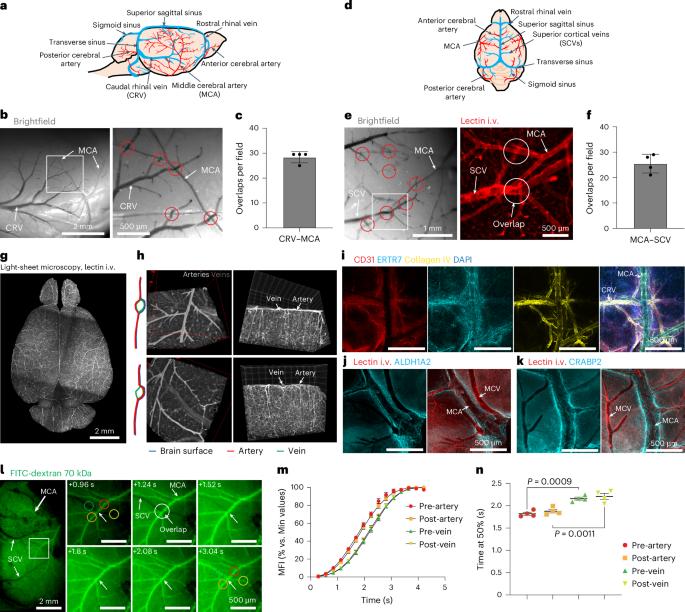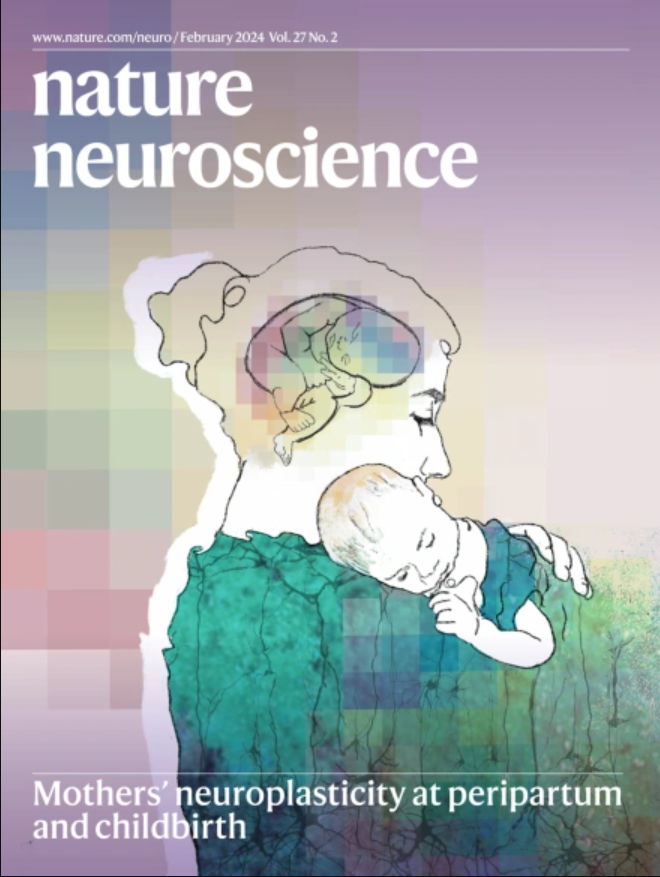脑脊液通过小脑膜动-静脉重叠的途径可以实现大分子和液体分流
IF 20
1区 医学
Q1 NEUROSCIENCES
引用次数: 0
摘要
脑脊液(CSF)的流动对于传递脑源性大分子信号并使其从脑实质排出至关重要。淋巴途径是这种脑脊液流动的最佳特征途径;然而,它不允许较大的大分子的运动。在这里,我们在小鼠中发现了另一种途径,即csf内注射的大分子可以从动脉周围空间穿越到静脉周围空间,转移发生在分散在大脑轻脑膜表面的轻脑膜周围血管(动静脉)空间之间的重叠部位。我们发现csf内注射的荧光示踪剂可以通过这些动静脉血管周围重叠部分到达静脉周围空间。这些间隙在淀粉样变性小鼠模型中仍然具有功能,并且对于清除多余的脑脊液容量至关重要。这些解剖结构可能通过允许脑源性大分子的引流和多余液体的分流以及帮助对新生成的脑脊液的免疫监视来支持脑功能。本文章由计算机程序翻译,如有差异,请以英文原文为准。


A route for cerebrospinal fluid flow through leptomeningeal arterial–venous overlaps enables macromolecule and fluid shunting
The flow of cerebrospinal fluid (CSF) is important for conveying brain-derived macromolecules for signaling and enabling them to be drained from the brain parenchyma. The glymphatic route is the best-characterized means of this CSF flow; however, it does not permit the movement of larger macromolecules. Here, we identify in mice an alternative route whereby intra-CSF-injected macromolecules can traverse from periarterial to perivenous spaces, with transfer occurring at sites of overlap between leptomeningeal perivascular (arteriovenous) spaces dispersed across the surface of the brain’s leptomeninges. We show that intra-CSF-injected fluorescent tracers can reach the perivenous space by passing through these arteriovenous perivascular overlaps. These spaces remain functional in a mouse model of amyloidosis and are essential for clearing excess CSF volume. These anatomical structures may support brain function by allowing the drainage of brain-derived macromolecules and the shunting of excess fluid and by aiding the immune surveillance of freshly generated CSF. The authors describe a mechanism for the clearance of macromolecules from cerebrospinal fluid in which macromolecules traverse from periarterial to perivenous spaces, at sites where intersecting leptomeningeal perivascular (arteriovenous) spaces overlap.
求助全文
通过发布文献求助,成功后即可免费获取论文全文。
去求助
来源期刊

Nature neuroscience
医学-神经科学
CiteScore
38.60
自引率
1.20%
发文量
212
审稿时长
1 months
期刊介绍:
Nature Neuroscience, a multidisciplinary journal, publishes papers of the utmost quality and significance across all realms of neuroscience. The editors welcome contributions spanning molecular, cellular, systems, and cognitive neuroscience, along with psychophysics, computational modeling, and nervous system disorders. While no area is off-limits, studies offering fundamental insights into nervous system function receive priority.
The journal offers high visibility to both readers and authors, fostering interdisciplinary communication and accessibility to a broad audience. It maintains high standards of copy editing and production, rigorous peer review, rapid publication, and operates independently from academic societies and other vested interests.
In addition to primary research, Nature Neuroscience features news and views, reviews, editorials, commentaries, perspectives, book reviews, and correspondence, aiming to serve as the voice of the global neuroscience community.
 求助内容:
求助内容: 应助结果提醒方式:
应助结果提醒方式:


